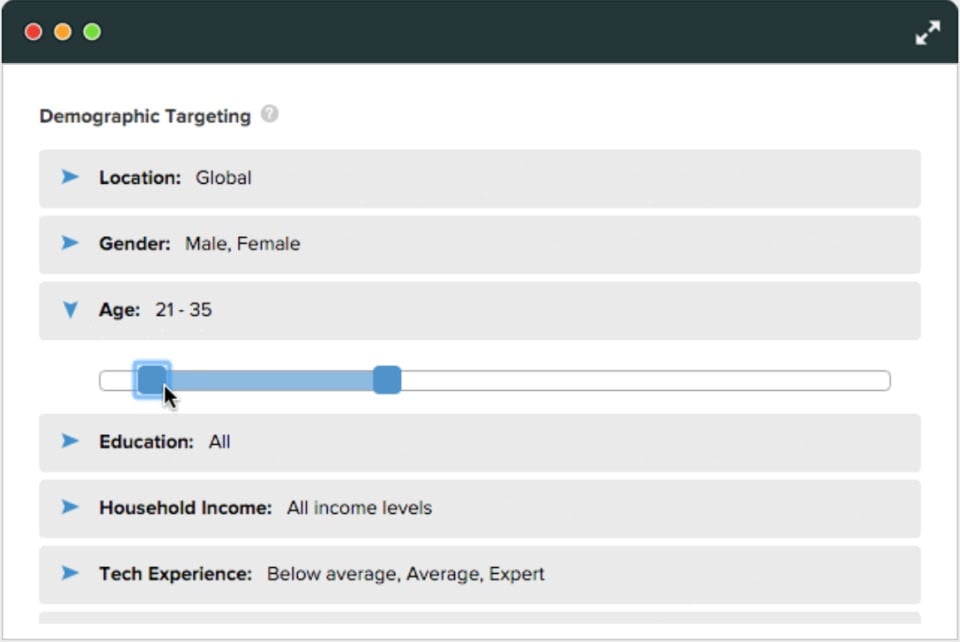Your lab team and employees have already taken a comprehensive look at it and identified a host of bugs, issues, and potential problems — all of which you took care of. But in most cases, that's not enough. If you really want to solve anything that might be wrong with your product, you need to get it in the hands of some members of your target audience.
It's their insight and input that will tell you what you need to address before your product goes to market. The process of gathering that insight and input is known as beta testing — a central component to a thoroughly screened product launch.
Here, we'll learn some more about the nature of beta testing, get a feel for some of its best practices, see some of the main financial considerations to bear in mind when sourcing beta testers, and identify the pros and cons of charging beta testers.
If done properly with close attention to detail, beta testing can be an excellent way to pinpoint problems with your product or service. However, it shouldn't be carried out hastily or indiscriminately, and there are certain tips and strategies worth considering. Here are some best practices to employ when setting up your beta testing process.
- Use an application process — a rigorous one if possible. You want to understand who your testers are, the problems they're looking to solve, and how your product or service could potentially address them. This information will offer insight into who your target demographic should be and the issues your product or service can best address.
- Start with a small base of testers. In doing so, you can get to know your participants and their problems on a more intimate level. You'll also get a better feel for their backgrounds and how qualified they are to participate.
- Interface with your testers directly — often via video chat. You want to be able to get a real feel for how your testers are responding to your product or service. Take the strides to communicate with them on a personal level. Let them give their honest feedback, offer their concerns, and engage in some degree of back-and-forth with you.
- Consistently touch base with your testers to keep them engaged — let them know you value their contributions, and remind them they're an integral part of the process. You want your testers to remain enthusiastic and understand they're a key part of the operation. Taking these steps will help you get the most out of their efforts.
One issue that underlies virtually all those best practices has to do with screening and incentives — the debate between charging beta testers and letting them participate for free.
Should you charge beta testers?
A lot has to go into your decision as to whether you want — and how much you want — to charge beta testers. It can rest on factors like your pricing acumen, how specialized your product or service is, and the scale of testing you're interested in carrying out.
Pricing
Perhaps the most obvious factor in deciding whether to charge for beta testers is what you'd like to charge them. Do you have the skills and flexibility to land on a fair price for participation in your testing? Can you identify a price point that won't discourage qualified applicants from taking part?
A reasonable price can provide both encouragement and motivation for your beta testers. If your price is sensible, they'll be encouraged to apply and motivated to remain actively engaged in the process — given that they have a financial stake in it. If you feel you can charge a price that will help you source a sufficient number of qualified, enthusiastic testers, charging for your beta test might be in your best interest.
Degree of Specialization
Is your product or service accessible and attractive enough to immediately appeal to a wide range of testers? If that's the case, you'll probably have an easier time sourcing excited testers willing to pay to participate in your testing.
Sometimes a product or service is so niche or specialized that it can only be tested by experts in a certain field. In these cases, the cost of those testers' expertise might be free access to the beta testing process.
If your product or service fits that bill, you'll need to thoroughly vet candidates to identify the ones that are qualified to give legitimate, constructive feedback on your offering. That can often lead to valuable insight that will only come free of charge.
Preferred Scale of Testing
The scale of your testing can partially inform whether — and how much — you should charge your applicants and testers. As previously mentioned, you'll want to keep your testing base small — at least initially. But as your beta tests progress, you might want to expand that pool to include more interested parties.
If that's the case, you might wind up foregoing the application process to take on a wider pool of candidates. If you choose that course, you're going to need to charge a price for the right to take part in your testing. It will help keep your testers accountable, so you won't wind up with a massive group of testers without much stake in the process.
Pros of Charging Beta Testers
Charging beta testers gives them more incentive to take the process seriously.
When you charge beta testers to participate, you're giving them a vested stake in the testing process. If they paid to participate, they have more incentive to be more involved and see things through. They'll be more receptive to aspects of testing like hard deadlines and providing comprehensive, constructive feedback.
It can help you gauge what people will ultimately be willing to pay for your product or service.
If you charge for your beta testing — or even just the application process — you can get a feel for the consumer demand for your product or service. This information can be shared throughout your organization, allowing departments like sales and marketing to have a more robust picture of what their efforts and responsibilities will look like post-launch.
Testers willing to pay are often more reflective of your target audience.
The qualities, issues, and concerns of the people willing to pay to test your product or service typically reflect those of the consumers that will ultimately buy it.
Charging for participation in beta testing is a litmus test of sorts. It allows you to discern prospects with an immediate interest in your offering from ones that aren't quite as serious about it. That can be a big help in letting you determine how you can best appeal to that kind of audience.
Cons of Charging Beta Testers
A high price to participate might discourage some qualified candidates.
Distributing any product or service at too high of a price point will always discourage some buyers, and participation in beta testing fits that mold. When you charge for your beta testing, you always run the risk of scaring off some potentially ideal candidates.
Some members of your target audience will only be willing to participate in your testing if they can do it for free. Testing, in itself, takes effort — not everyone is looking to pay to offer it.
Sometimes paying for beta testing platforms can expedite the process.
There are paid platforms and services dedicated exclusively to putting companies in touch with communities of potential beta testers. These options often give you the flexibility to source an ideal testing base from a wide breadth of vetted testers. Some — like BetaTesting — also allow you to filter testers based on your ideal demographic specifications.

Access to these platforms can come at a hefty premium and are generally specific to software products. They can be a sound investment for the reach and efficacy of your beta testing efforts, but they come at a cost you might not be able to recoup by charging for participation.
The decision to charge for your beta testing or offer it for free will often hinge upon the nature of your product or service, the budget you're working with, and your preferred scale of testing — among other issues, aspects, and concerns. Regardless of where your business stands in terms of those factors, some degree of beta testing will always be in your best interest.
You need to know what some real users think before you offer your product or service to all of them.
Pricing Strategy
.png?width=112&height=112&name=Image%20Hackathon%20%E2%80%93%20Vertical%20(45).png)








![Price Skimming: All You Need To Know [+ Pricing Calculator]](https://53.fs1.hubspotusercontent-na1.net/hubfs/53/price-skimming-strategy.jpg)

.jpg)
![B2B Pricing Models & Strategies [+ Pros and Cons of Each]](https://53.fs1.hubspotusercontent-na1.net/hubfs/53/b2b-pricing-models-and-strategies.jpg)